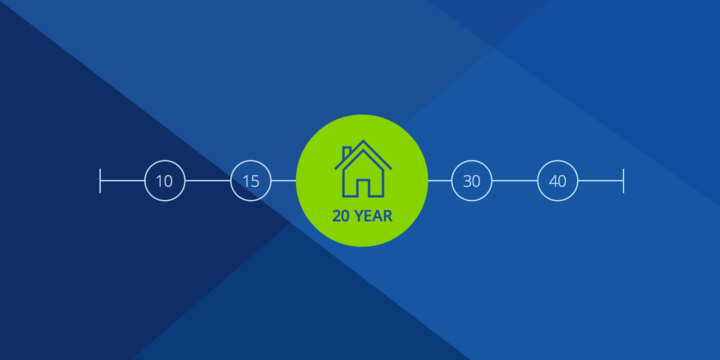How to Save Money on a Mortgage
Getting a low mortgage rate could save tens of thousands of dollars over the life of your loan. Here's how to get the best rate possible.


Written by Alycia Lucio on January 3, 2025
Buying a house may be the largest purchase you ever make. And yet, the typical buyer only gets pre-approved by one lender, according to a 2024 Zillow survey. That’s like buying the first car you see or trusting that one gas station will always give you the best price.
It’s an oversight that could hit your wallet in a big way. Not comparing mortgage loan terms from several lenders, to potentially get a lower interest rate, could cost you tens of thousands of dollars over the life of your loan. The most common reasons buyers who got two or more lenders to pre-approve them reported doing so to find a lender that offered a better rate (36%).
1. Find out your credit score
To get the best rate possible, the first thing you’ll want to do is make sure your credit is ready.
Most lenders will use your Fair Issac or FICO credit score when they price your loan. Typically, the higher your FICO credit score, the lower your interest rate will be.
If you don’t know your FICO credit score﹣and they range from a low of 300 to a high of 850﹣find out. Some credit card companies and banks will provide customers with their FICO credit score for free, or you can order your score at FICO.com.
FICO has a tool that lets you calculate the different rates you might expect for certain credit score ranges. (Note, these are expressed as annual percentage rate or APR estimates, which is the interest rate plus other fees and costs of the loan spread over 30 years.)
2. Raise your credit score, if needed
If your FICO credit score is lower than you’d like, you can take steps to improve it. But you should start this process long before contacting mortgage lenders, because it can take several months (or years) to see a change in your credit score depending on where you start and your end goal.
There are a number of apps and free services out there that can help you set up a budget and improve your spending habits, or you can contact a HUD-approved housing counseling agency. Most will offer online, telephone, and in-person options. These agencies should provide information about their services and fee structure for free. If a service doesn’t do that, consider going elsewhere.
According to the Consumer Financial Protection Bureau, warning signs for credit repair scams include companies that ask for payment before providing services (which is illegal) or guarantee a specific (and large) increase in your credit score. Don’t let these companies fool you.
3. Check your credit report for errors
Your FICO credit score is based on information from your credit report. You’d be surprised at how often errors occur﹣and those errors could make it harder for you to qualify or secure that lower interest rate.
By law, you can request a free copy of your credit report annually from each of the three reporting agencies﹣Equifax, TransUnion, and Experian. Information on disputing an entry can be found on the agencies’ websites.
You should include copies of any documentation, such as acknowledgement letters from creditors, about entries you are disputing.
4. Comparison shop
Once your credit is in order, you’re ready to meet with lenders. Notice we used the plural lenders. You should always compare multiple lenders to find a lender you are comfortable working with. Compare several loan estimates, noting the interest rates and also the fees (which will be reflected in the APR).
In addition to your local bank or credit union, or lenders referred by real estate professionals or friends, you can find local lenders on Zillow to provide loan estimates. Or you can check rates on Zillow anonymously to compare offers from multiple lenders, all in one place.
5. Put 20% (or more) down
Lenders will ask how much you plan to put down. Obviously, the more you put down the less you’ll have to finance.
Some buyers will put 20% down to alleviate the need to purchase private mortgage insurance or PMI. Putting 20% down gives you more might also help you be a competitive buyer and stand out to the seller in a competitive-bid situation. And it may help you qualify for a lower interest rate, which can help you pay thousands less in interest over the life of your loan.
But saving that much for a down payment can be difficult for some buyers. If your resources for a down payment are stretched, consider home buyer assistance programs from local housing agencies. There are down payment assistance programs available that will cover part or all of your down payment costs.
6. Pay points
Paying mortgage points (also known as discount points) can help you lower the interest rate on your loan. Points are fees paid directly to the lender at the close of your loan. One point costs 1 percent of your mortgage amount (or $1,000 for every $100,000). Essentially, this allows you to pay some interest upfront in exchange for a lower interest rate, and the cost may be tax-deductible.
As a general rule of thumb, you should consider paying points if you plan to own the home for a long time.
7. Avoid large credit purchases
Your lender has used your monthly income and debt to determine your debt-to-income ratio or DTI. This number generally should not exceed 43% of your pre-tax income.
If you finance a major purchase like appliances, carpeting, or furniture before your loan closes, you add to your monthly debt, which could raise your DTI and could delay your loan close, or result in the loan being turned down in severe scenarios.
How much money could you save on a mortgage?
Does getting a lower interest rate save you money on a mortgage? We think the numbers in the accompanying chart speak for themselves.
Scenario: 30-year fixed-rate loan for a $250,000 home with 20% down
| Interest rate | Mo. Payment (with taxes & insurance) | Total Interest Paid (over 360 months) |
|---|---|---|
| 4.0% | $1,205 | $143,739 |
| 4.125% | $1,219 | $148,948 |
| 4.25% | $1,234 | $154,197 |
| 4.375% | $1,249 | $159,486 |
| 4.49% | $1,262 | $164,387 |
| 4.625% | $1,278 | $170,180 |
| 4.75% | $1,293 | $175,588 |
| 5.0% | $1,324 | $186,513 |
Need help financing your next home? Our loan officers at Zillow Home Loans* are ready to help. Check out our various home loan options.
*An equal housing lender. NMLS #10287
How much home can you afford?
At Zillow Home Loans, we can pre-qualify you in as little as 5 minutes, with no impact to your credit score.
Zillow Home Loans, NMLS # 10287. Equal Housing Lender
Get pre-qualifiedHow much home can you afford?
See what's in reach with low down payment options, no hidden fees and step-by-step guidance from us at
Zillow Home Loans.
Zillow Home Loans, NMLS # 10287. Equal Housing Lender
Calculate your BuyAbility℠
Related Articles
Get a mortgage with Zillow Home Loans
Go from dreaming to owning with low down payment options, competitive rates and no hidden fees. A dedicated loan officer will guide you until you have your keys in hand.

Zillow Home Loans, NMLS #10287. Equal Housing Lender.



